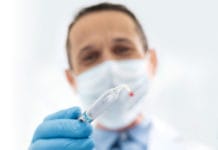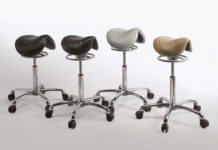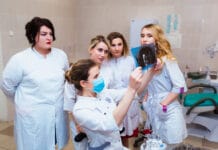As the second decade of the 21st century has ended, we are seeing an increasing number of “organ-on-a-chip” devices allowing scientists to observe and analyze organ cells using a variety of instruments. Recently, researchers have started experimenting with “tooth-on-a-chip.”
“On-a-chip” devices recreate the natural physiology and mechanical forces that affect the cells in the human body. Researchers use them to see the organ’s functionality, behavior, and response at the cellular or molecular level.
A tissue sample from an organ is removed and placed inside a small transparent slide with microfluidic channels. Researchers pass various chemicals (medications, toxins), through the channels to influence the sample. Then they study the way the tissue reacts and draw conclusions about how the entire organ could be affected.
Lungs, liver, intestine, brain, and even placenta are already being deeply analyzed. Next up is teeth. Scientists have created the first “tooth-on-a-chip” device that copies a tooth with dental caries.
“Tooth-on-a-chip” was developed at the Oregon Health and Science University’s School of Dentistry. The rubber slides contain a tiny piece of dentin taken from a molar. Microfluidic channels introduce fluids to the dentin. The model replicates the pulp-dentin interface and allows live-cell imaging to figure out how dental pulp cells respond to biomaterials.
“Today’s cavity fillings don’t work as well as they should. They last for five, seven years on average, and then they break off. They don’t work because we haven’t been able to figure out what’s happening at the interface of the tooth and the filling. This device can help address that by giving us a close-up view of what’s happening there in real-time.”
Luiz E. Bertassoni, D.D.S., Ph.D., Associate Professor of Restorative Dentistry School of Dentistry and biomedical engineering in the OHSU School of Medicine, co-author of the paper on tooth-on-a-chip, published this research in Lab on a Chip.
The device can help scientists and dentists understand how unique dental cells work in their natural environment. Tooth-on-a-chip makes it possible to see how teeth respond to injuries and treatments. In the future, it can help develop new caries prevention methods as well as restorative solutions.
“It opens up a new window into the complexity of dental care that could change the way we do dentistry quite significantly,” Bertassoni continued.
What Does It Mean For An Average Patient?
Even though the tooth-on-a-chip device has only been created recently, it can offer benefits for an average patient in the nearest future. Today, aesthetically appealing composite restorations last about five to seven years (generally speaking). Even though some stay intact longer, old restorations often don’t provide proper protection from caries. This means that during a lifetime, an average patient may have to replace restorations up to ten times.
If the tooth-on-a-chip device provides the much-needed insight on the workings of the inner tooth and its reaction to the filling material, we may be taking advantage of longer-lasting fillings in the future.
Dentists could one day identify restorative materials that last longer and work better depending on patients’ oral microbiome and individual characteristics of their teeth.
“Years from now, dentists could extract a tooth from a patient, load it into this device, observe how a dental filling material interacts with the tooth, and pick a material that’s best for that particular patient,” Bertassoni said.
By acquiring new information about the way teeth react to different chemicals and environments, we could be taking advantage of longer-lasting and durable teeth repair solutions.
Final Thoughts
The “tooth-on-a-chip” device is a substantial investment in the quality of restorative dentistry and beyond. It can help provide personalized dental solutions by studying the needs and reactions of the individual dentin tissues. With further research, we may be enjoying higher-quality dental work in the nearest future.











